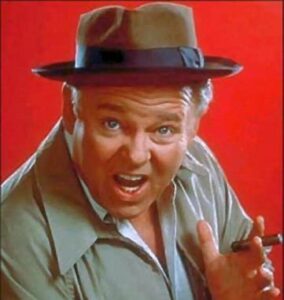Social classes in the U.S.
In many countries the idea of social classes is accepted, but in the U.S., it is resisted, especially by liberals, on the assumption it means inequality, stratification, and conflict. After years of social work, I disagree.
I see the first three classes as overlapping, non-threatening, fluid, natural, and healthy. They have more equal opportunities than they did in the past.
We have been taught to think that social class is determined by income, education, and occupation; but aren’t these the results of class differences (talent, ambition, and lifestyle). Those with more talent and ambition eventually gain better educations, jobs, and incomes. * They aren’t ‘better’ in terms of human worth, just different.
To get a picture of classes, think of Grace Kelly as upper class, Ozzie and Harriet as middle class, Archie Bunker as working class, and Bonny and Clyde as lower class bums and common criminals. According to noted conservative E. Banfield the upper class Grace Kelly’s expect a long life, feel they can shape the future, have the longest adolescence and the most foresight, talent, tolerance, privacy, ambition, and interest in college. (Some of these are shaped by circumstance, some not.) The middle class Ozzie and Harriets expect to be in their prime in their 60s, have less of the above, and are more conventional. * The working class Archie Bunkers feel old by 50, have still less of the above, and are more authoritarian and fatalistic. *
The lower class of bums and common criminals have chosen to remain immature. They feel old by 40 and compare disastrously in the categories above. * In one survey of a city, they were 6% of the families and absorbed 77% of the welfare, 5l% of the health services, and 56% of the mental health and correctional services. * No chronic poverty exists outside this class. * Poor immigrants pass them every day.
The upper, middle, and working classes are equal in terms of human worth. They are supposed to be equal in voting, military obligation in time of war, legal rights, and opportunities for education, housing, and work. The lower class, however, chooses not to be equal, because they don’t hold up their end.
Four classes, however, liberals like to portray society as two classes, rich versus poor (management vs. labor, landlord vs. tenant, older vs. younger, etc.) As self-appointed Robin Hoods, many liberals want to ‘redistribute the wealth’ through ‘transfer payments’ to ‘level the classes.’ They tax the upper classes more and tar them with guilt; and they try to push the working class through college, when many are not interested. (Hollywood doesn’t help by portraying the working class as something to escape.)
When it comes to the lower class, liberals make up excuses for them and create programs to help them, which often create dependency.
We should recognize classes as natural and healthy. They don’t conflict, they complement each other. People in the upper, middle, and working classes should be given equal opportunity and left to gravitate to wherever they feel comfortable. This and a firm approach with the lower class could save great sums of money from social programs that are trying to make everyone the same.
*Banfield, Gilder, Hazlitt

